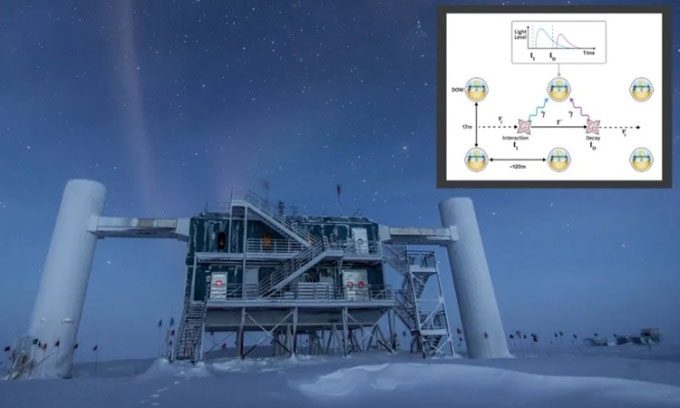Deep-Space Device in Antarctica Detects Tau Neutrinos from Powerful Astrophysical Events Hitting Earth.
Astronomers utilizing the IceCube Observatory buried deep within the Antarctic ice have detected 7 neutrinos, also known as ghost particles, as they pass through the Earth. The signals indicate that these particles are neutrinos, which serve as vital messengers between high-energy cosmic events and Earth, Space reported on March 15.

IceCube Neutrino Observatory in Antarctica. (Photo: Jack Pairin).
Neutrinos are neutral particles with almost no mass that travel through space at nearly the speed of light. Due to these characteristics, neutrinos rarely interact with anything. In fact, about 100 trillion neutrinos pass through a person’s body every second. If one were to use a neutrino detector the size of a person, one would have to wait approximately 100 years for a neutrino to interact with a particle in the human body. Because of their elusive nature, neutrinos are nicknamed “ghost particles.”
High-energy neutrinos from sources in the universe at the edge of the Milky Way are known as astrophysical neutrinos and come in three forms: electron neutrinos, muon neutrinos, and tau neutrinos. All these ghost particles are difficult to detect. In 2013, the IceCube Observatory made its first discovery of an astrophysical neutrino. Currently, the facility has specifically identified tau neutrinos, which could play a role as entirely new cosmic messengers, according to Doug Cowen, a physics professor at the University of Pennsylvania and co-lead of the research team.
To detect neutrinos passing through the Earth, IceCube employs numerous arrays of gold spheres called Digital Optical Modules (DOM), submerged in ice. In total, the observatory has 5,160 DOMs buried deep within the Antarctic ice, waiting for neutrinos to interact with molecules in the ice and produce charged particles. These charged particles emit blue light as they move through the ice, which the DOM captures. Specifically, when high-energy tau neutrinos interact with molecules, they create characteristic light emissions, including a double-peaked event that the DOM can detect.
IceCube can detect various types of neutrinos in real-time, but the facility currently cannot do so with tau neutrinos. Instead, the hunt for this special particle requires scanning data stored over the past decade. Rather than searching manually, the research team developed a convolutional neural network optimized for image classification to sift through nearly 10 years of data collected by IceCube, from 2011 to 2020, to find signs of tau neutrinos. As a result, they identified traces of 7 potential tau neutrinos. According to Cowen, the chance of misidentification is only 1 in 3.5 million.
This new discovery utilized only 3 arrays of DOMs, but future analyses will employ more detectors. The research team has shared their findings on the arXiv database and will publish them in the journal Physical Review Letters.


















































